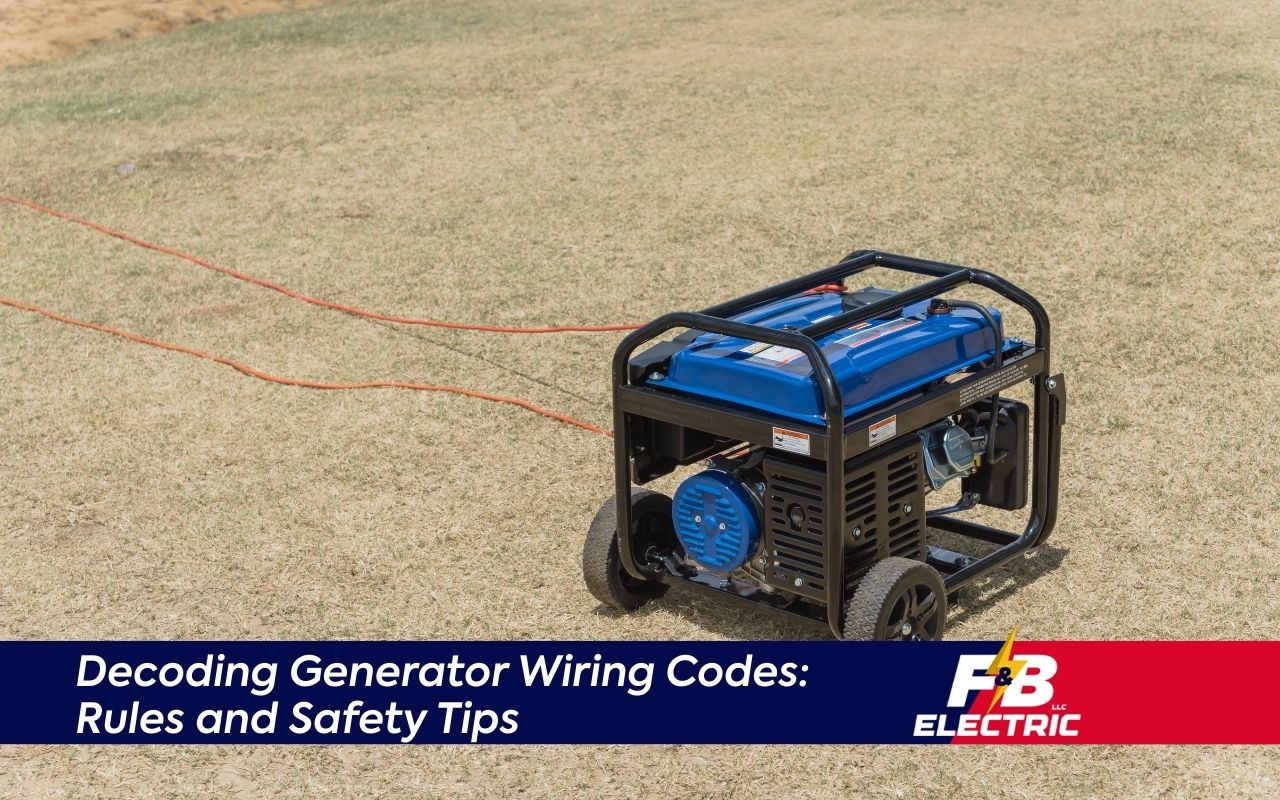
Generator wiring codes might seem complex, but understanding them is essential for safe electrical installations. Incorrect wiring can cause fires, equipment failure, or electrical shocks. Whether you are a professional electrician or a homeowner, knowing generator wiring codes ensures safety, efficiency, and compliance. Following these codes protects your home and devices while improving system longevity. This guide provides practical insights into generator wiring codes to help you make informed decisions.
Understanding the Basics of Generator Wiring Codes
Selecting the proper wire gauge is a critical aspect of generator wiring codes. Correct wire sizing prevents overheating and voltage drop. Breakers and fuses must match the electrical load to protect circuits. Properly sized devices prevent fires and damage to appliances. Grounding systems are equally important. Following generator wiring codes ensures safety from surges and lightning strikes while protecting sensitive electronics. Compliance guarantees safe, reliable operation and minimizes risks.
Importance of Compliance with Generator Wiring Codes
Compliance protects lives, property, and equipment. Electrical incidents can cause fires, damage, and legal issues. Insurance providers often require proof of code adherence. Following generator wiring codes improves system reliability and performance. Well-grounded systems reduce stray voltage and ground faults. During emergencies, compliant wiring ensures critical devices like medical equipment and refrigerators operate correctly. Meeting these standards prevents costly retrofits and repairs.
Key Components of Generator Wiring Diagrams
Generator wiring diagrams illustrate system connections, including the generator, transfer switch, distribution panel, and grounding system. Proper diagram reading is crucial for installation and maintenance. Color coding and labeling help identify conductors by phase, neutral, and ground. Diagrams specify breaker ratings, conductor sizes, and grounding electrode dimensions. Accurate diagrams reduce errors, miswiring, and downtime. For professional assistance, consider licensed electrical services to ensure proper setup.
Common Generator Wiring Mistakes to Avoid
Undersized conductors cause overheating and voltage drop. Incorrect grounding increases shock hazards. Using incompatible transfer switches or breakers violates generator wiring codes. Failing to label disconnects creates confusion during emergencies. Always double-check connections against diagrams and test overcurrent devices. Avoiding these mistakes ensures safe operation and compliance with generator wiring codes. For expert installation, contact F and B Electric Baltimore.
Safety Precautions When Working with Generator Wiring
Lock out and tag out all power sources before wiring. Wear gloves, glasses, and PPE. Ensure workspace is clear and dry. Disconnect the generator and ATS using rated switches. Inspect tools and rated extension cords. Follow manufacturer and local authority safety guidelines. These precautions reduce risk and maintain compliance with generator wiring codes.
Upgrading Generator Wiring for Increased Efficiency
Retrofitting improves performance and system life. Evaluate load requirements and future growth. Upgrade conductor sizes and transfer switches if needed. Install surge protection, power factor correction, and remote monitoring. Use UV-resistant, high-temperature wiring for outdoor runs. Always follow generator wiring codes during upgrades to ensure safety and efficiency.
Troubleshooting Generator Wiring Issues
Inspect connections for corrosion, overheating, or looseness. Perform voltage measurements to detect drops or phase imbalances. Test insulation resistance and grounding with GFCIs or RCDs. Ensuring proper neutral and ground separation complies with generator wiring codes. These steps enhance system reliability and prevent hazards.
Future Trends and Innovations in Generator Wiring Technology
IoT-enabled generators transmit load, temperature, and vibration data for predictive maintenance. Semiconductor-based transfer switches reduce switching time. Wireless grounding monitors enable remote inspections. Hybrid generators combine solar, battery, and fuel systems. Staying current with generator wiring codes is crucial as technology evolves to maintain safety and efficiency.
Frequently Asked Questions
What are the primary elements covered by generator wiring codes?
Generator wiring codes cover conductor sizing, overcurrent protection, grounding, labeling, and transfer switch installation. Compliance ensures safe and reliable operation.
How often should wiring be inspected for a standby generator?
Inspections typically occur annually, but harsh conditions may require more frequent checks. Inspect conductors, grounding, overcurrent devices, and transfer switch function.
Can a homeowner perform generator wiring installations?
Local regulations usually require a licensed electrician for installations. Homeowners may perform minor connections under professional guidance, but key components should be installed by qualified personnel.
What are the consequences of non-compliant generator wiring?
Non-compliance can lead to fires, equipment damage, shock hazards, failed inspections, voided warranties, and insurance issues. Faulty wiring risks lives and property.
How do I stay updated on changes in generator wiring codes?
Subscribe to code authorities like NFPA, attend workshops, and review manufacturer bulletins. Staying informed ensures compliance and safe installations.
Ensuring Safe and Proper Generator Wiring
Regular training and recertification maintain high installation standards. Follow comprehensive checklists from site assessment to commissioning tests. Conduct periodic inspections and engage professionals for audits. Adhering to generator wiring codes protects people, property, and equipment. For guidance or professional services, visit our contact page for expert assistance.
